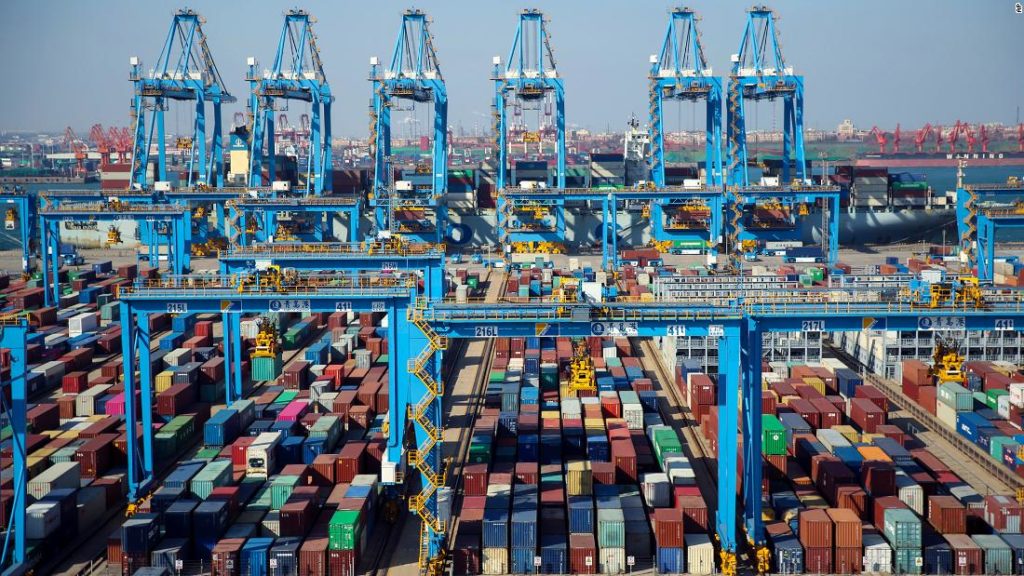
A supply chain brings the stuff, the things we can’t live without.
Large and small, long and short, it’s stuff that is researched and designed, approved and produced, then boxed and shipped.
A strong chain delivers quality on time; then there’s the other supply chains.
The Made In America stamp used to be a point of pride in the manufacturing world. If something was American made, it worked the way it was supposed to work. If it broke, it was fixable.
Early cars were made on a moving assembly line perfected by Henry Ford. Before Ford, automakers created cars in-house, from frame, to body, to tires.
Ford changed the process by creating a supply system of outside companies that fed parts to his factory.
A Practical Look
History is full of battle tales, of great victories and stinging defeats. Some were fought for land, some for faith, some for reasons twisted by money and power. The common thread over centuries of civilization was the flow of material.
Roman soldiers needed the same things as modern soldier: protective clothing, effective weaponry, safe transport to battle, and a safe place to rest until the next one, along with food and water.
A Change-Up In Delivery
Once upon a time, in a more agrarian society, farmers and ranchers traded among themselves. They traded beef for poultry, grains for milk; they helped each other at harvest time; it was a era of sharing, or perish. Which meant moving to town for proud farmers.
Change came with evolved transportation, which included better roads and better storage. Now Farmer Bob had markets for his goods that weren’t available earlier.
Farmer Bob also had a question he didn’t have before: Should he stay in his local network, or branch out. And if he branched out, what were the risks? Would new markets be as rewarding as his old buyers? Could he produce enough for both?
Folks on the frontier didn’t call for advice
Small changes create a ripple effect, like what you see if you throw a rock into a still pond. The ripple moves out from the rock splash in circles that get smaller the further they travel. Many small ripples added together can create large waves.
Times of great change have names like The Stone Age, Bronze Age, and Iron Age, where mankind evolved from killing animals for food and wearing their skins, to farming and textiles, to ordering take-out in pajamas.
Supplying A Train Of Thought
Besides the flow of materials, and the science needed to keep it moving, ideas have their own special flow.
Modern, industrialized, nations, run on the clock, a clock that keeps speeding up faster and faster. We want what we want now, if now sooner. Same day delivery is the big promise. Amazon Prime is shrinking the seconds between placing an order and opening a package.
The speed of commerce comes from a society wired to the hilt. We want faster, no matter the consequences. Porch pirates seem to share the same feeling.
The only thing that slows us down a little bit is art. A painting takes time; a story takes time; a building takes time. It’s not all the same time, and not all independent of the pace of modern life, but artists still have a strong connection to one another across time.
I made that connection recently in a Willamette Writers meeting featuring a talk on Sylvia Plath
I didn’t show up for Sylvia Plath, though I’ve had a moderate crush for decades; I showed up to say hello to a fellow Willamette Writer who has a good story. We’ve emailed a couple of times, just enough to let us each know we share a common boundary.
I read about Sylvia Plath as an English major. My lasting impression was that she invited readers into her work, then kicked their ass for being so damn nosy. It was an effective trick the first time and every time since. I felt the same kick in downtown Portland.

I like to think I’ve met women like Ms Plath, women who dream of better things, women certain of their ability, and women who feel hurt when their abilities don’t produce better things.
Then they hurt themselves.
The key to being good with them is not agreeing to be the person they think you are, who they dream you might be.
Instead of prancing around and drawing these sort of observations from a great girl, try kindness:
“… I have fallen terribly in love, which can only lead to great hurt: I met the strongest man in the world, ex-Cambridge, brilliant poet whose work I loved before I met him, a large hulking healthy Adam, half French, half Irish, with a voice like the thunder of God; a singer, story-teller, lion and world wanderer and vagabond who will never stop. The times I am with him are a horror because I am then so strong & creative & happy, and his very power & brilliance & endless health & iron will to beat the world across is why I love him….”
Instead of letting a dreamer include you in their biggest dreams, just be nice. Being nice would probably kill the relationship, but why not be a nicer light than they’re used to.
I look at the glow from the girl on the book cover and see someone who deserved better than they got. Instead of an emotional beatdown from her Englishman husband, why not be helpful.
Help Was In Short Supply
What happens when successful men step up their game beyond the normal boundaries? When an insecure, gifted, man with perfect hair meets a dream girl with even greater gifts, what happens?
In the 1950’s, dreamy guy was the main dish. Marlon Brando was dreamy; Richard Burton was dreamy; maybe they dreamed about one another? If they did, you can believe more than a few women wondered why they weren’t good enough for dream guy.
If logistics is the term used for managing the material flow from origin to consumption, what is the term for managing emotional flow from one era to another?
The B-29 bomber rained fire during the War in the Pacific that ended in 1945. It carried and dropped the first nuclear bombs. After the war they were mothballed.

For all of the time and resources used to get them up in the air over Japan, they were temporary.
The big new B-52 jet bomber rolled out in 1955 and no one looked back.
With art, and artists, we always look back. I like to think Lady Gaga looks back at Sylvia Plath. Maybe the term for managing emotional flow is ‘Temporary.’


